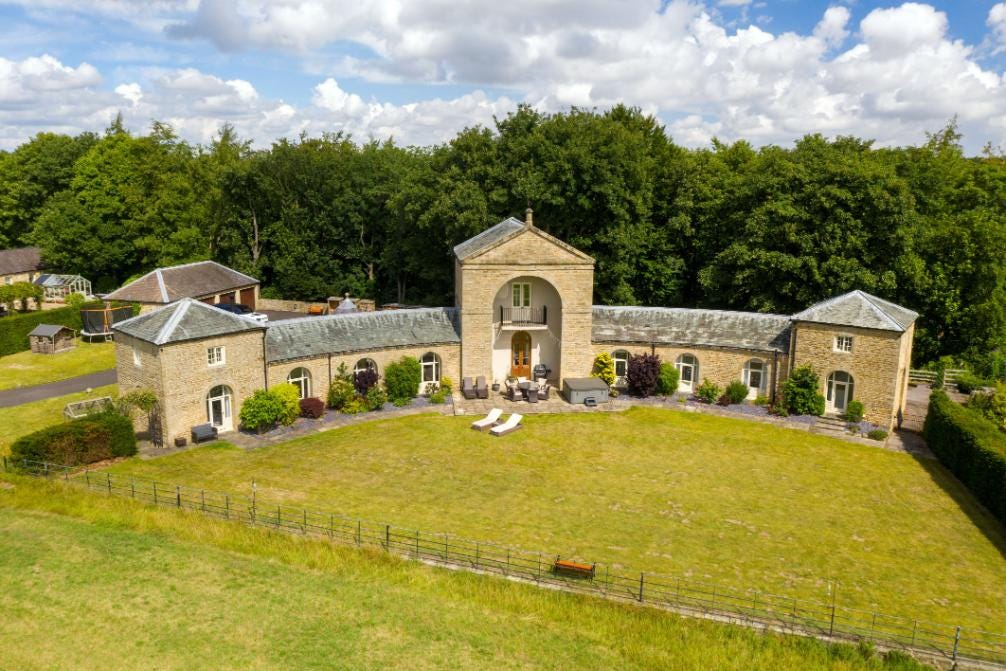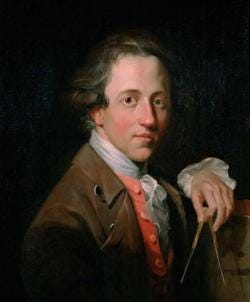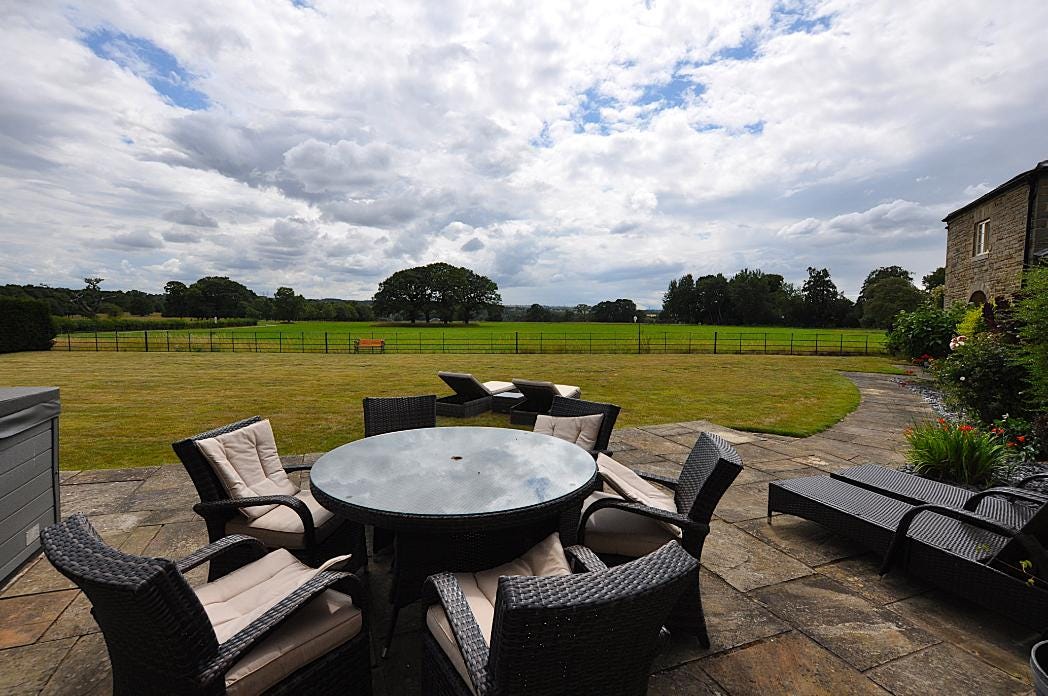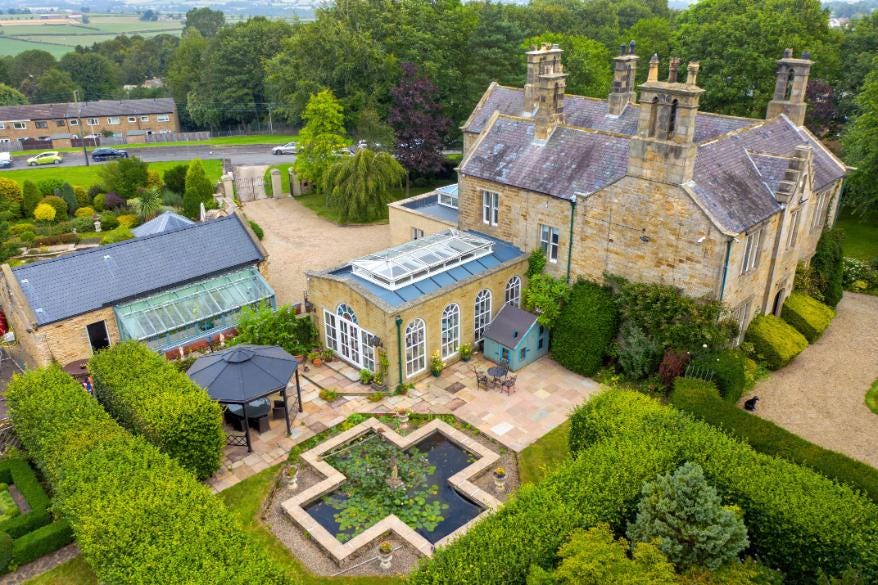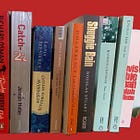Historic homes offer rare chance to buy into the past
Got a million or two to spare? Two historic homes are up for grabs.Tony Henderson reports
A double helping of history is on offer as two grand heritage houses are up for sale.
Interest is expected to peak as a home designed by eminent Georgian Bank of England architect Sir John Soane comes on to the market.
Soane House, near Durham City, is Grade II* listed and is being offered by A&G Land and Property at £1,750,000.
And a listed 19th-century vicarage in a County Durham village near where the world-changing first journey along the Darlington & Stockton railway took place 200 years ago is available, with bids invited over £1 million.
Both are being marketed by A&G Land and Property Agents, which described Soane House as “a truly rare and historically significant property of exceptional architectural pedigree.
“This home is the only surviving example of a uniquely symmetrical stone structure designed in 1783 by Sir John Soane, one of Britain’s most revered Georgian architects and the visionary behind the Bank of England.
“This is a once-in-a-lifetime opportunity to acquire a unique home of national architectural interest.”
Originally conceived as an ornate cow barn, the crescent-shaped building was sensitively converted into a private residence in the 1980s and has since undergone architect-led restoration by its current owners.
Accessed via a gated driveway, the property includes a quadruple garage and lawned gardens, with a south-facing terrace with views across parkland.
An entrance archway leads to a central hall, flanked by two wings, and features three individual staircases that access independent bedroom suites at either end. All five bedrooms are doubles, with three bathrooms and reception spaces.
Sir John Soane (1753–1837), who specialised in the Neo-Classical style, was influenced by taking the then-fashionable Grand Tour to Rome. The son of a bricklayer, he rose to the top of his profession, becoming professor of architecture at the Royal Academy.
Soane's best-known work was the Bank of England, which had a widespread effect on commercial architecture. He also designed Dulwich Picture Gallery, which, with its top-lit galleries, was a major influence on the planning of subsequent art galleries and museums.
The Sir John Soane's Museum is based in his former home and office, in Lincoln’s Inn Fields in London, which was designed to display the artworks and architectural artefacts that he collected during his lifetime.
The museum is described in the Oxford Dictionary of Architecture as "one of the most complex, intricate, and ingenious series of interiors ever conceived."
After he acquired an Egyptian sarcophagus which arrived at his house in 1825, Soane held a three-day party, to which 890 people were invited, including the artist JMW Turner.
Among Soane's works are the dining rooms of both Numbers 10 and 11 Downing Street (1824–26) for the Prime Minister and Chancellor of the Exchequer respectively.
The vicarage is in the village of High Etherley near Bishop Auckland and would have been caught up in the excitement of Locomotion No.1’s first run along the Stockton & Darlington line.
At 7am on September 27, 1825, 12 waggons of coal were led from the Witton Park pit near High Etherley.
The coal trucks joined other wagons and the passenger railway carriage “Experiment” for a journey whose 200th anniversary is being celebrated this year.
A report from the scene described how “gentlemen’s carriages, post chaises, gigs, jaunting cars, waggons, carts, filled with company, were seen from all directions; while equestrians, mounted on spirited steeds, and others on broken-down hacks and stupid donkeys, added to the general effect, which still further increased by a vast concourse of pedestrians, who pressed forward eager to behold a sight altogether new.”
The day would still have been the talk of the village in 1832 when St Cuthbert’s Church at High Etherley, built for Bishop of Durham William van Mildert, was opened.
Gareth Jones of A&G Land and Property Agents said: “We are delighted to bring to market The Old Vicarage, a truly exceptional listed residence which is an architecturally significant and historically rich property that once housed the village’s first reverend, George Watson.”
The Rev Watson published a book of sermons and it is said that Queen Victoria purchased 33 copies of the sermon collection.
The six-bedroom vicarage stands in four acres of grounds, featuring an Italianate garden with waterfalls, statues and fountains, a fruit and vegetable garden, a wildlife meadow, and an array of formal and informal areas.
Mr Jones said: “This is a rare opportunity to acquire one of the North East’s most impressive period homes. The Old Vicarage has been extensively renovated and thoughtfully extended, and offers enormous versatility for residential or commercial use.”


